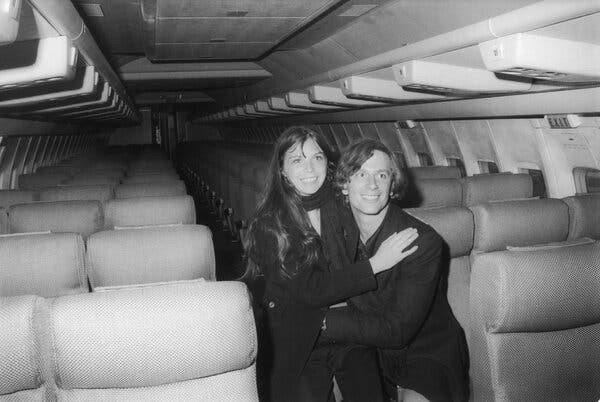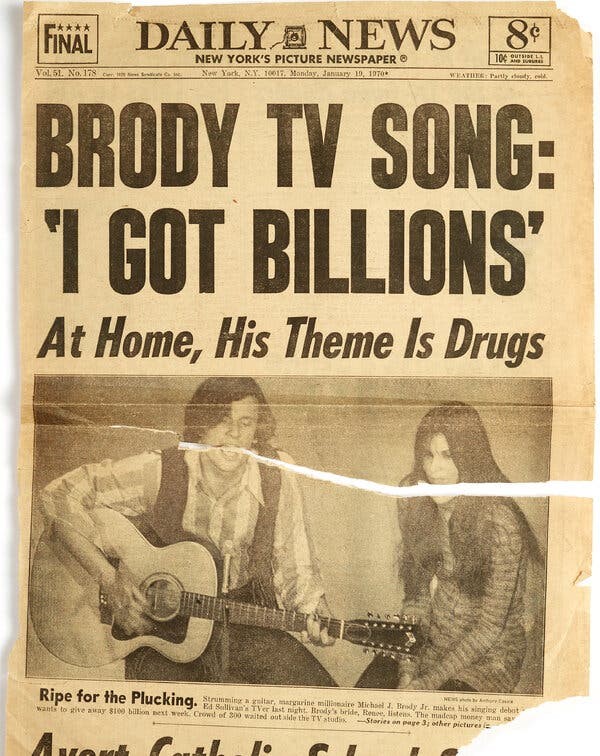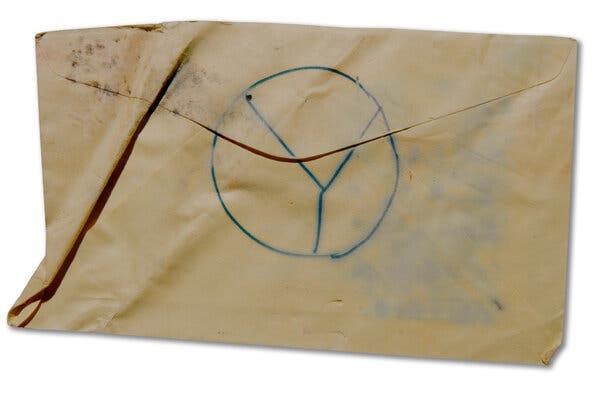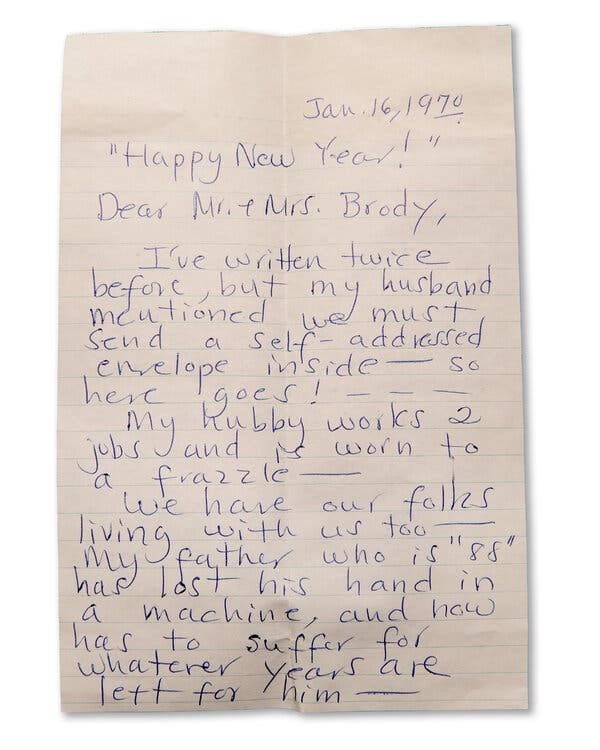The mystery behind the man “gives away” $25 million and 30,000 unopened letters
One day in early January 1970, Michael James Brody Jr. stepped off a Pan Am jet at John F. Kennedy Airport with unprecedented popularity.
A previously unknown 21-year-old named Brody, in 1970 became one of the heirs to a fortune in the margarine business. When he returned from his honeymoon in Jamaica, to show the romance of a newlywed couple, Brody then included a plane so that he and his bride could be comfortable on the return journey. home.

The tremors began after the plane landed. Brody, wearing wide-leg pants and green sunglasses, announced to reporters that he would donate his $25 million fortune to ordinary people to spread love and “solve problems.” theme of the world.”
For the next 10 days, the dreamy, shaggy-haired Brody appeared on the front pages of newspapers and “The Ed Sullivan Show.” There, he played a Bob Dylan song on a 12-string guitar. Hearing his announcement, crowds flocked to the house Brody was renting in Westchester County and the office in Midtown Manhattan.
And then there were letters from tens of thousands of people, piling up so quickly that the post office threatened to burn them all.
Brody wrote personal checks for thousands of dollars and distributed his large sums to everyone who asked to receive them. However, life is not as dreamlike and the $25 million dollar amount seems to be still in its original place.
The young heir had said that the idea wanted to share and help people while he was… taking drugs. At the same time, many of the people who received his checks discovered they were worthless, and the bank refused to let them cash them.

Almost immediately, Brody’s checks began to be returned and things cleared up. Soon after, he disappeared from the headlines. However, this story did not disappear from historical memory.
“Dear Mr. Brody”
One morning, Thai Jones, curator of the special collections library at Columbia University, picked up a letter opener that looked like a scalpel, touched a messy mailbox, and took a deep breath. .
“Let’s get started,” he said before cutting an envelope addressed to the sender at Queens Avenue in New York, marked “Private and confidential – open only by recipient.”
“Dear Mr. Brody,” Jones began, skimming a typewriter request for $1,000 from a woman whose husband had recently passed away and left behind a mountain of bills.
He opened another letter written in scribbles from a man in Brooklyn. This person is struggling to raise six children on a salary of $125 a week. The man wrote: “To prove I’m telling the truth, you can visit my apartment any time.”
“The archives are full of spam,” Jones said wryly.
It was the first time Jones had seen the treasure trove of about 30,000 letters, most of which were unopened. These letters were gifted by the filmmakers to “Dear Mr. Brody,” a documentary that began airing on Discovery+ on April 28. In the film, some of the letters are read aloud by their authors and depict the backdrop of a frenzied period that confronts people with negative emotions and despair.

The back of an unopened letter
They are messages of the past and a source for historians to explore.
The filmmakers of “Dear Mr. Brody” donated about 30,000 letters to Columbia University. Most of them are still unopened.
“It’s really weird to put the stories of everyday people into the archives in this way,” Jones said. “When thousands of people are writing at the same time and talking about their lives.”
Different stories in each letter
These letters are now in Columbia. They recreate the picture of life from a decade ago. Melissa Robyn Glassman, producer of “Dear Mr. Brody,” is sorting stuff at Hollywood producer Edward R. Pressman’s warehouse. He is preparing to donate his archives to the Academy of Motion Picture Arts and Sciences.
On the shelf, she noticed several boxes labeled “Brody’s letter.” Inside were piles of letters, all addressed to the same person, all stamped January 1970 and unopened.
She said: “I asked Ed’s wife about them. Oh I’ve been trying to convince Ed to throw them away for years!”
But then those letters caught Glassman’s attention. “I was obsessed. I started opening them with my mother,” she said.
Maitland was the one hired to take the photo, and he had the same reaction as Glassman. He said of Brody’s story: “It’s not a story. It’s a million stories.”
And the letters in Pressman’s filing cabinet turned out to be just the tip of a giant iceberg. The filmmakers reached out to Brody’s son, which turned out to be about 100,000 more letters, found in a toolbox and later kept by a screenwriter. This person is also trying to make a biopic about Brody.
Most of the letters were left unopened, although many of them had peace signs painted on the seals. An hour and a half of opening letters offers readers many stories of debt, illness, and despair. But there are also plenty of kids begging for money for toys, begging for help with college tuition or a down payment. Someone asked for some money to start “a hard-rock radio station in a college town” or a non-state newspaper in Alaska. Some people even want to ask for money just to live like Brody.

The letters contain a mixture of desperate pleas and wishless wishes
In the documentary, the filmmakers focus on heartbreaking individual stories, like a mother and daughter who can only write letters to each other but never see each other face to face. But they also discovered some striking phrases that lead to broader themes. There is a collection of letters from the children of immigrant agricultural workers in Immokalee, Florida. They were written as school assignments, depicting indiscriminately the rampant violence and alcoholism in the town the children lived in.
It remains to be seen how historians will use this vast treasure or even how they know what to look for. For Mr. Jones, a scholar of the 1960s, the letters illustrate the paradox of an era defined in historical memory as a period of a countercultural character.
Refer to NYT
at Blogtuan.info – Source: cafebiz.vn – Read the original article here



